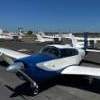Emergency Procedures
-
Members Online
- wingslevel
- MB65E
- Brian2034
- Rmfriday
- Ibra
- Fix
- MatthiasArnold
- 47U
- David Harbison
- kalleh
- raymondscott0321
- ODL
- M20 Ogler
- Lumberg
- Gary Bymers
- Marc_B
- 1980Mooney
- danad
- Shiroyuki
- Alan Maurer
- BrentS
- Flymu2
- Grant_Waite
- CCAS
- Aaviationist
- gabez
- mluvara
- BobbyH
- Jetpilot86
- tmo
- pirate
- 00-Negative
- ohdub
- jeremyc209
- jrwilson


Recommended Posts
Join the conversation
You can post now and register later. If you have an account, sign in now to post with your account.